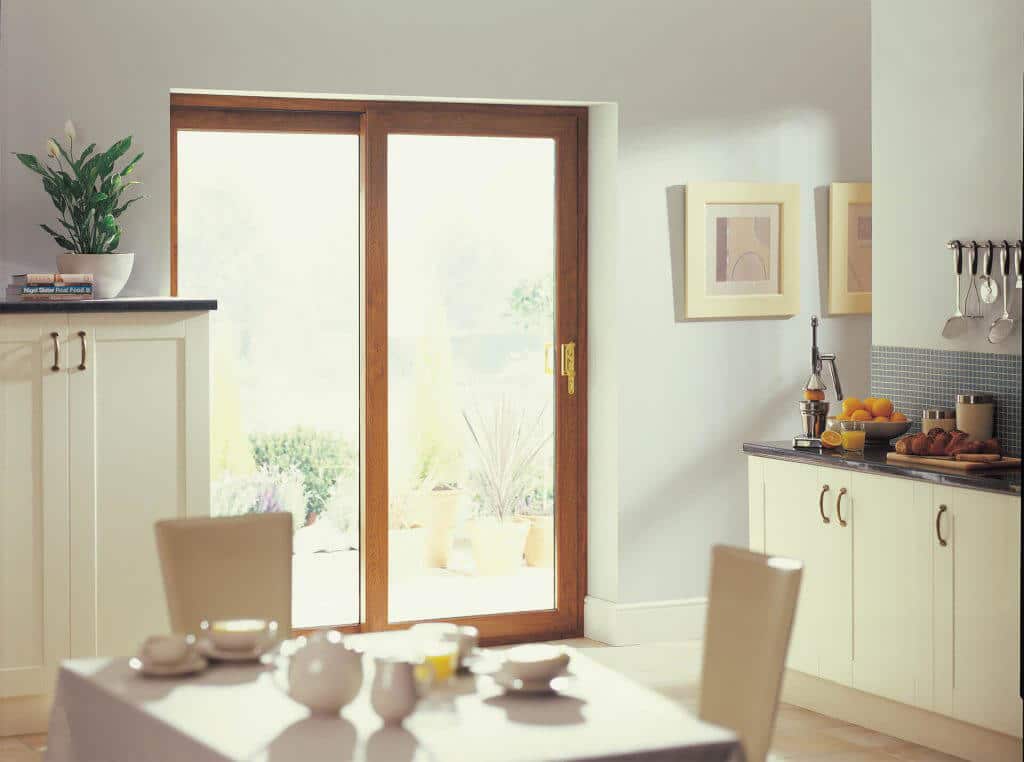Timber windows are an excellent choice for people who want to add character and history to a building. Typically you’ll find timber windows on period properties, but today, they are being used to bring a historic and country-cottage vibe to newly built homes. Whether you choose casement, sash or sliding wood windows, you’ll need to be prepared to take care of, paint and repair them.
Timber is a great material to use for your external windows and doors, however, it does require a little more maintenance than aluminium and uPVC windows. This is because timber can absorb moisture which leaves it prone to rot. It can also expand and contract with damp and weather conditions which leads to cracking and other damage.
Your windows need checking regularly for signs they need repair. In order to maintain the quality of your timber windows and prolong the window’s longevity, it’s vital that you care for them accordingly.
Our guide offers tips and advice on restoring wooden windows, as well as covering how to look after your window frames so they maintain their condition for longer.
How to Clean Timber Windows
Timber windows are robust and durable. However, over time, the elements can get the better of them by beginning to impact the finish, quality and more importantly, the job that windows were designed to do. Your first step in cleaning and restoring timber windows is to ensure that they’re well-maintained and cleaned on a regular basis.
For the internal glass:
- Apply glass cleaner to the glass panes from top to bottom.
- Using a soft cloth or paper towel, buff the cleaner into the glass. Make sure to get into the tight corners – where the glass meets the frame.
- Using a clean cloth or paper towel, buff the window panes until the glass is dry. Make sure to buff out any drip marks.
For the external glass:
- Fill a bucket with warm soapy water.
- Submerge a clean sponge into the bucket and, starting from the top of the window, work the soapy water into the glass until you reach the bottom.
- If grit and dirt are found on your sponge, use a clean sponge to repeat the step above until dirt and grime has been removed from all surfaces.
- Use a squeegee to wipe the glass clean and to remove any drip marks.
- Once dry, spray the glass with glass cleaner and use a soft cloth or paper towel to work the glass cleaner into the corners.
- Use another soft cloth or paper towel to buff the window until dry and streak-free.
For the timber window frames (internal and external):
- Use a soft brush, such as a clean toothbrush, to lift any dirt from the window frame. It’s best to apply water and a small amount of washing up liquid to the brush to help ease off the dirt.
- Use warm water and a soft cloth to remove the dirt and cleaning product from the timber.
- If you have painted your timber frames white, use a diluted bleach solution to remove any stains.
- Don’t forget to wipe down all surfaces and clean the sill.

How to Restore Timber Windows
If your wooden windows have been a little neglected, you’ll need to restore the glass and windows before they become permanently damaged. Before doing any of the below steps, make sure you understand the material and any coatings that you have on your timber windows. Some of these tips may not be appropriate to the finish of your frames.
- Check for any areas that may need repairing. If you have concerns over repairs, see the section below.
- Clean the glass and frames as outlined above.
- Carefully and thoroughly sand down the frames – only light sanding is needed.
- If desired, paint your frames. Make sure any dust is wiped off with a damp cloth after sanding to ensure smooth results.
- Make sure you finish your frames by treating the wood. This prevents the weather from harming the wood.
- If the silicone has pulled away from the window or becomes mouldy you need to remove the old silicone and apply the new.
How to Repair Timber Windows
Wood-framed windows may need repairing if left unmaintained for quite a while. To ensure that your timber window looks great and functions smoothly, taking the time to repair broken elements will vastly increase its lifespan.
- If you have rotten wood, carefully remove the rotten wood from the frame and use a high-performance wood filler or putty to fill in any gaps.
- Purchase high-quality screws and repair the latch by swapping the old screws for the new ones.
- Repair hinges by replacing old screws with new ones. Use an oil spray to repair seized hinges.
How to Paint Timber Windows
Painting wooden windows is an easy process and gives a great end result. Whether you want to completely change the style of your home or simply repaint an already painted frame, you’ll need to do the following;
- If you’re painting a frame that already has paint on it, you’ll need to strip any flaking paint first.
- Whether you’re applying paint to an unpainted frame or painted frame, you need to sand it down completely before proceeding further. Use small-grain sandpaper to avoid damaging the frame. Once sanded, clean the frame by removing any dust.
- Prime all areas of the frame to ensure the wood won’t crack.
- Use high-quality paint designed for use on timber. It’s important to paint your frame slowly, using small amounts of paint, to prevent drip marks. Ideally, use a paintbrush for the entire frame.
- Once dry, use a sealant to secure the paint. This treatment will prevent the wood from expanding and contracting in extreme temperatures.
A thorough repair, restoration and paint will go a long way, and your refurbished wooden window frames will be stronger and more energy-efficient as a result. Such a project can take some time but it will offer a new lease of life to traditional wood windows.
How Long do Wooden Window Frames Last?
With the right care and maintenance, you can expect modern wood windows to last over 60 years. Double glazed wood windows are very strong and energy-efficient, but they do need some regular diy. Opt for metal or uPVC alternatives if you can’t put in this work.
Tell-tale Signs Wooden Window Frames Need Replacing
Whilst most windows, with general upkeep, can be repaired or restored, some may need replacing altogether. But how do you know when it’s the right time to look into window replacement? Here are some tell-tale signs that a simple repair won’t quite do the job;
- Noticeable heat loss is a significant reason to replace your windows. Not only will your interior struggle to heat up, but your home will also become cold relatively quickly. In addition, the heat lost through your windows results in you needing to use your central heating system more than usual and you’ll experience unusually high energy bills.
- Interior condensation, particularly in the morning, means that either your glazing or the seals around your frames have failed. Leaving this problem allows moisture into the interiors of your home which results in damp and mould.
- Although rotting parts of timber frames can be removed and filled, if your entire window frame has rotted away you’re posing a major security issue. Rot in timber frames causes the frames to become extremely weak. If the rot has taken over the window frame then replacing the entire unit is needed.
- Faded spots on furniture, walls and carpets are common in older windows however this can easily be prevented by replacing the timber window. If you’re noticing that the sun’s UV rays are fading the interior of your house, it means they aren’t high-performing windows and likely don’t meet recent building regulations.
Don’t forget to check out our related guide: cleaning uPVC windows for more window cleaning techniques.
We hope this advice on timber window repair and replacement offers a solution to your window issues. Replacement may not always be necessary, so consider spending some time on repairs first. Your windows could look good as new with the right care and attention.
 10-year guarantee
10-year guarantee Made in Britain
Made in Britain Variety of finance options
Variety of finance options 10+ years' experience
10+ years' experience